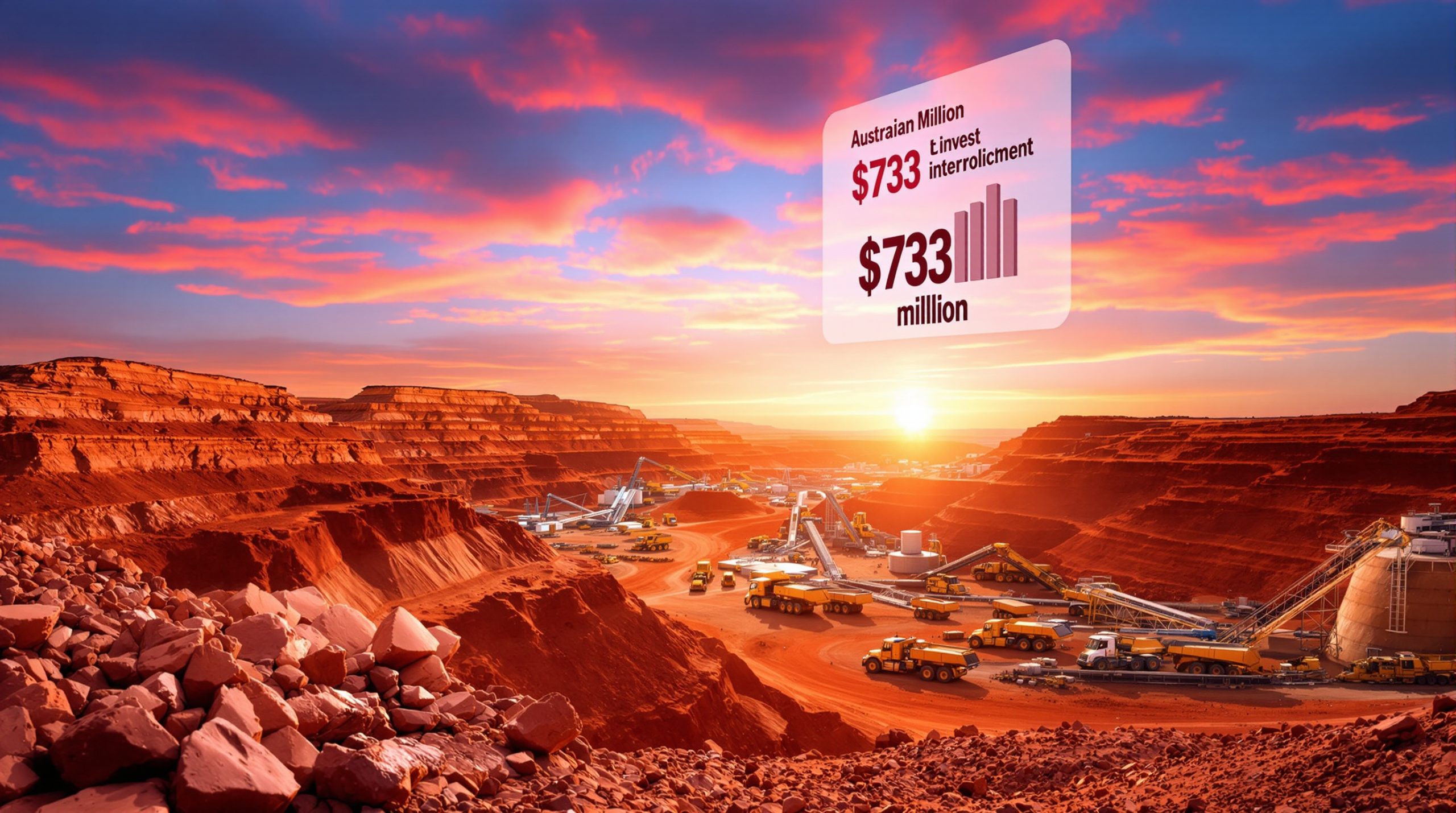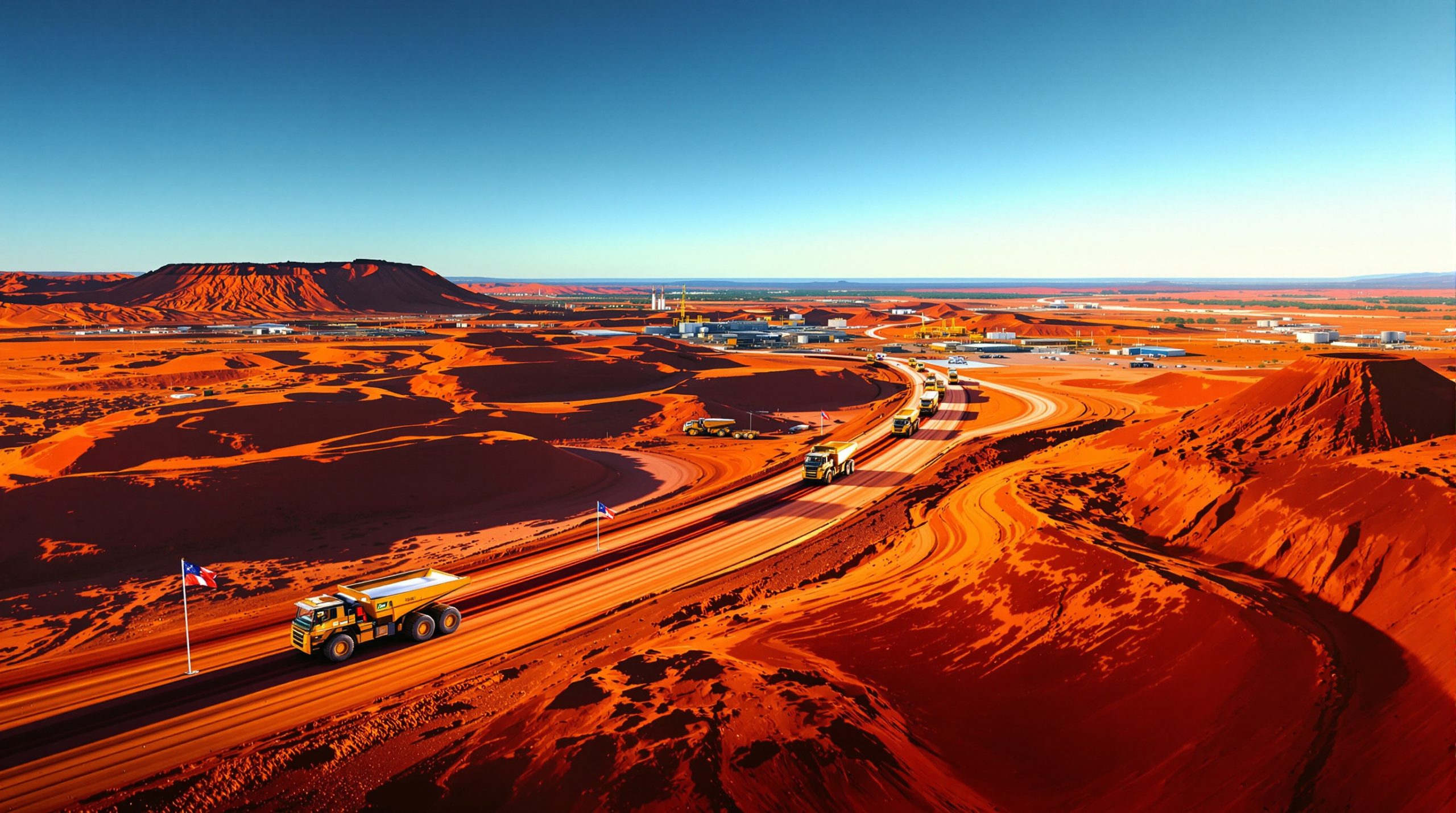Trump's Alaska Road Approval: Opening Access to Critical Minerals
The Ambler Road project in Alaska has received presidential approval, marking a significant policy shift with far-reaching implications for critical minerals energy security. This 211-mile infrastructure development aims to connect Alaska's remote mineral-rich regions with existing transportation networks, potentially unlocking valuable resources considered essential for America's economic and strategic interests.
What is the Ambler Road Project in Alaska?
The Ambler Road project represents a major infrastructure initiative designed to provide access to one of America's most mineral-rich yet undeveloped regions. Spanning 211 miles of gravel road, the project will connect the Dalton Highway to the Ambler Mining District in northern Alaska, creating a crucial transportation link to facilitate mineral extraction and delivery.
The road's design prioritizes environmental considerations through several key features. Rather than constructing a traditional paved highway, planners have opted for a gravel surface to minimize ecological disruption. Additionally, the project includes two strategically placed bridges designed to protect waterways and reduce habitat fragmentation.
As a toll road, access will be controlled, allowing for better management of traffic volume and environmental impact while still providing the necessary infrastructure for mining operations to extract copper, cobalt, and other valuable minerals from the region.
Geographic Significance
The Ambler Mining District sits in a remote section of Alaska's Brooks Range, an area with minimal existing infrastructure but extraordinary mineral potential. The road's planned route traverses challenging terrain including river crossings, permafrost areas, and diverse ecosystems, requiring specialized engineering solutions to minimize environmental impact.
Current Accessibility Challenges
Without road access, the mineral resources in the Ambler Mining District remain effectively stranded. Current transportation options to the region are limited to expensive air transport or seasonal ice roads, making commercial-scale mineral extraction economically unfeasible despite the known mineral wealth.
Why Did Trump Approve the Alaska Road Project?
President Donald Trump's approval of the Ambler Road project represents a significant policy reversal, overturning a previous Biden administration decision that had blocked construction. This decision reflects several key strategic priorities at the national level.
Strategic Mineral Independence
The approval aligns with growing concerns about America's dependence on foreign sources for critical minerals. According to the U.S. Geological Survey, the United States is more than 50% import-dependent for 31 of 35 critical minerals, with China dominating global production of many essential materials.
The Ambler Mining District contains substantial deposits of copper and cobalt—materials essential for renewable energy technologies, electric vehicles, and electronics—making domestic access to these resources increasingly important for American economic and strategic interests.
Economic Development for Alaska
The project promises substantial economic benefits for Alaska, a state heavily dependent on resource development. Trump characterized the project as an economic "gold mine" that "should have been long operating and making billions of dollars for our country," suggesting significant revenue potential from mineral extraction.
Beyond direct mining revenue, the project is expected to create construction jobs, mining positions, and supporting industry employment in a state that has faced economic challenges due to volatile oil prices and reduced production from legacy fields.
National Security Considerations
Critical minerals have increasingly become recognized as strategically important from a national security perspective. Materials found in the Ambler Mining District have applications in defense technologies, communications systems, and infrastructure, making secure domestic supplies a matter of strategic importance.
The U.S. Department of Defense has identified several minerals accessible through the Ambler Road project as essential for military and defense applications, reinforcing the national security rationale behind the approval.
How Will the Government Participate in the Mining Project?
In an unusual approach to resource development, the federal government is taking a direct financial stake in mining operations associated with the Ambler Road project.
Federal Investment in Trilogy Metals
According to White House information, the U.S. government is investing $35.6 million to support mining exploration in Alaska's Ambler Mining District. This investment gives the federal government a 10% ownership stake in Trilogy Metals, a company with significant mining claims in the region.
This direct equity position represents a departure from typical government involvement in resource development, which usually focuses on regulatory oversight and permitting rather than financial participation.
Additional Ownership Options
Beyond the initial 10% stake, the government has secured warrants that would allow it to purchase an additional 7.5% of Trilogy Metals in the future. If exercised, these warrants would potentially increase the government's ownership to 17.5%, giving federal authorities a significant voice in operational decisions.
The terms of these warrants, including exercise price and expiration date, remain important factors in assessing the government's long-term commitment to the project.
Public-Private Partnership Model
This arrangement represents an innovative public-private partnership approach to resource development. Rather than relying solely on private industry to finance exploration and development, the government is sharing both risk and potential reward.
Industry analysts suggest this model could potentially be applied to other critical mineral projects if successful, particularly for resources deemed strategically important but commercially challenging due to location or development costs.
What Minerals Will Be Accessed Through the Ambler Road?
The Ambler Mining District contains a diverse array of minerals essential for modern technology and industry, with values enhanced by increasing demand from clean energy, electronics, and defense sectors.
Critical Technology Minerals
The region contains significant deposits of copper and cobalt, both essential for the rapidly growing electric vehicle and renewable energy sectors. A single electric vehicle can require up to 180 pounds of copper, making secure supplies increasingly important as automotive electrification accelerates.
Cobalt, another key battery material found in the district, faces particular supply chain challenges, with over 70% of global production currently coming from the Democratic Republic of Congo, often under problematic labor conditions.
Industrial Metals
Zinc deposits in the Ambler Mining District represent another valuable resource accessible through the road project. Zinc plays crucial roles in infrastructure development, manufacturing, and corrosion protection, with applications ranging from construction to automotive production.
These base metals form the foundation of industrial economies, with demand typically increasing alongside economic development and infrastructure investment.
Strategic Resources
Beyond the more common industrial metals, the district contains gallium and germanium, specialized materials with applications in semiconductors, fiber optics, infrared optics, and solar cells. These lesser-known elements have become increasingly important in advanced technology applications, from 5G networks to satellite systems.
• Gallium: Used in microwave circuits, high-speed switching circuits, and infrared circuits
• Germanium: Critical for fiber-optic systems, solar cells, and night-vision applications
• Rare earth elements: Present in quantities that could supplement other domestic sources
What Environmental Concerns Were Raised About the Project?
The Biden administration's previous decision to block the project stemmed from several specific environmental concerns that were cited as outweighing potential economic benefits.
Wildlife Impact
Environmental assessments identified potential risks to wildlife populations in the region. Of particular concern were impacts on:
• Caribou migration routes: The Western Arctic Caribou Herd follows traditional migration patterns through areas the road would traverse
• Sheefish habitats: These valuable subsistence fish species depend on water systems that could be affected by road construction
• Other wildlife: Bears, wolves, moose and other species inhabit the affected ecosystems
These concerns led to the previous administration's decision to halt the project, prioritizing ecosystem protection over resource development.
Environmental Mitigation Measures
The current approval includes specific design elements intended to address environmental concerns, including:
- Construction of a gravel road rather than paved highway to reduce environmental footprint
- Strategic placement of bridges to minimize disruption to waterways
- Toll road status to control access and usage
- Seasonal operational restrictions during sensitive wildlife periods
Interior Secretary Doug Burgum emphasized these mitigation measures, noting the road would be "constructed from gravel to be sensitive to environmental concerns," reflecting an attempt to balance development with ecological protection.
Ongoing Environmental Monitoring
Environmental organizations have advocated for robust monitoring requirements as part of any approval, including:
"Any development in this sensitive region must include continuous monitoring of water quality, wildlife population health, and habitat integrity, with mechanisms to pause or modify operations if negative impacts exceed projections."
The final permit conditions will likely include requirements for baseline data collection before construction begins, followed by ongoing monitoring throughout the operational life of the project.
How Does This Project Compare to Other Resource Development Initiatives?
The Ambler Road project represents a distinctive approach to resource development compared to other recent initiatives, both in Alaska and nationally.
Scale and Scope
At 211 miles, the road represents one of the largest new infrastructure projects in Alaska in recent decades. By comparison, most resource access roads in Alaska range from 10-50 miles, making this an exceptionally ambitious transportation infrastructure project specifically designed to unlock mineral resources.
The project's location in remote northern Alaska also distinguishes it from many other resource developments that tend to occur closer to existing transportation networks or population centers.
Government Investment Model
The direct federal investment and ownership stake in Trilogy Metals represents an unusual approach to public-private partnership in resource development. Historically, the government's role has primarily been regulatory rather than financial.
This investment approach more closely resembles models used in some other countries, particularly in strategic sectors, than typical U.S. resource development patterns where private industry bears the financial risk and reward.
Strategic Prioritization
The project reflects a broader pivot in critical minerals policy toward prioritizing domestic resource development. This approach aligns with the Critical Minerals list maintained by the U.S. Department of the Interior, which identifies minerals essential for economic and national security.
Similar prioritization can be seen in other recent policy initiatives, including Trump's critical minerals order and provisions in the Inflation Reduction Act encouraging domestic mineral production.
What Are the Next Steps for the Ambler Road Project?
With presidential approval secured, several crucial steps remain before construction can begin and the road becomes operational.
Permit Reissuance
Trump's directive instructs the Bureau of Land Management, National Park Service, and U.S. Army Corps of Engineers to reissue necessary permits for the road's construction. This process will include:
- Environmental permit updates or revisions
- Right-of-way approvals
- Water crossing authorizations
- Potentially updated environmental impact statements
These agencies will need to review and potentially revise previous work to comply with the presidential directive while ensuring legal requirements under various environmental laws are still met.
Construction Timeline
While specific timelines have not been announced, infrastructure projects of this scale typically require several years for full implementation:
• Permitting completion: 6-12 months
• Detailed engineering and design: 12-18 months
• Initial construction phases: 2-3 years
• Complete road construction: 4-5 years total
Weather conditions in Alaska limit construction seasons, further extending the timeline before the road would become fully operational.
Mining Development
Once road access is established, individual mining operations in the district will require their own permitting and development processes:
• Mine-specific environmental impact statements
• State and federal mining permits
• Water discharge authorizations
• Reclamation bonding requirements
These processes typically take 3-5 years from application to operational status, meaning mineral production from the district would likely begin several years after road completion.
What Are the Economic Implications of the Ambler Road Project?
The economic impact of the project extends beyond the immediate construction activity, potentially transforming Alaska's mineral production landscape.
Job Creation
The project is expected to create thousands of jobs across multiple sectors:
• Road construction: 300-500 temporary jobs
• Mining operations: 2,000-3,000 direct jobs once mines are operational
• Supporting industries: Additional employment in transportation, supplies, and services
• Induced employment: Jobs created through economic activity generated by project spending
These employment opportunities would be particularly significant for Alaska's rural communities, which often face limited economic options.
Revenue Generation
Trump suggested the project could generate "billions of dollars" for the country through mineral production and associated economic activity. This revenue would flow through several channels:
- Corporate tax revenue from mining operations
- Royalties from mineral production on public lands
- Income tax from employment
- Toll revenue from road operations
- Potential dividends from government's equity stake in Trilogy Metals
The actual revenue potential depends on mineral prices, production volumes, and operational costs, all subject to market fluctuations over the project's lifespan.
Infrastructure Development
Beyond mining, the road could potentially open up other economic development opportunities in previously inaccessible regions of Alaska. Similar resource access roads in other parts of the state have eventually supported:
• Tourism activities
• Additional resource exploration
• Telecommunications infrastructure extension
• Scientific research access
While primarily designed for mining access, the infrastructure could potentially serve multiple purposes over its operational life.
How Does This Decision Reflect Broader Resource Policy Shifts?
The Ambler Road approval reflects several important policy trends with implications beyond this specific project.
Critical Mineral Strategy
The project aligns with a growing emphasis on securing domestic supplies of minerals essential for clean energy technologies, advanced manufacturing, and defense applications. This focus represents a strategic shift from traditional resource priorities (oil, gas, coal) toward materials needed for emerging technologies.
The U.S. Geological Survey has identified multiple minerals found in the Ambler Mining District as critical for economic and national security, including copper, cobalt, gallium, and germanium.
Regulatory Approach
The reversal of the previous administration's decision demonstrates a different approach to balancing environmental protection with resource development priorities. This shift reflects broader tensions in resource policy between:
• Conservation and habitat protection
• Economic development and job creation
• Strategic resource security
• Climate considerations (both positive and negative)
The pendulum swing between these priorities often corresponds with changes in administration and reflects different values regarding land use and resource development.
Government Involvement
The direct financial stake taken by the federal government signals a more interventionist approach to ensuring development of strategically important resources. This approach represents a departure from the traditional U.S. model of private-sector resource development with government providing only regulatory oversight.
This model more closely resembles approaches taken in other countries, where governments often maintain ownership interests in strategic resource sectors to ensure national interests are represented in development decisions.
FAQ: Alaska's Ambler Road Project
How long will the Ambler Road be?
The approved road will extend approximately 211 miles from the Dalton Highway to the Ambler Mining District in Alaska.
What type of road is being constructed?
The road will be a gravel toll road with two bridges, designed to minimize environmental impact while providing necessary access for mining operations.
What is the government's financial involvement in the project?
The U.S. government is investing $35.6 million in Trilogy Metals, giving it a 10% ownership stake with warrants to purchase an additional 7.5% in the future.
What critical minerals are found in the Ambler Mining District?
The district contains significant deposits of copper, cobalt, zinc, gallium, germanium, and other minerals essential for modern technology and manufacturing.
Why was the project previously blocked?
The Biden administration had blocked the project due to concerns about impacts on wildlife populations, including sheefish and caribou.
When could mining operations begin?
Mining operations would likely begin 3-5 years after road completion, following separate permitting processes for individual mine sites.
Will the road be open to the public?
As a toll road, access will be controlled, with primary use designated for mining operations rather than general public access.
What environmental monitoring will be required?
Specific monitoring requirements will be established during the permitting process but will likely include water quality testing, wildlife population monitoring, and habitat assessments.
How does this project connect to clean energy goals?
The minerals accessed through this project are essential for clean energy technologies including solar panels, wind turbines, and electric vehicle batteries, potentially supporting domestic clean energy manufacturing.
Could other industries benefit from the road?
While primarily designed for mining access, the infrastructure could potentially support tourism, scientific research, telecommunications extension, and other economic activities in the region.
Further Exploration
Readers interested in learning more about resource development projects in Alaska can also explore other major mining infrastructure developments that demonstrate the ongoing evolution of the state's resource economy. Alaska's vast mineral potential continues to attract attention from both industry and policymakers seeking to balance economic development with environmental stewardship in one of America's most resource-rich states. Furthermore, recent North American mining trends and the US mineral production order demonstrate Trump approves road project in Alaska is part of a broader strategy to secure domestic mineral supply chains.
Disclaimer: This article contains information about infrastructure development and mining projects that involve forecasts of economic outcomes and environmental impacts. Actual results may vary based on market conditions, regulatory decisions, and unforeseen factors. Investment decisions should be made based on comprehensive research beyond the information presented here.
Want to Invest in the Next Major Mineral Discovery?
Discovery Alert's proprietary Discovery IQ model instantly identifies significant ASX mineral discoveries, transforming complex data into actionable investment opportunities. Explore how major discoveries like those discussed can generate substantial market returns by visiting Discovery Alert's dedicated discoveries page and position yourself ahead of the market.




